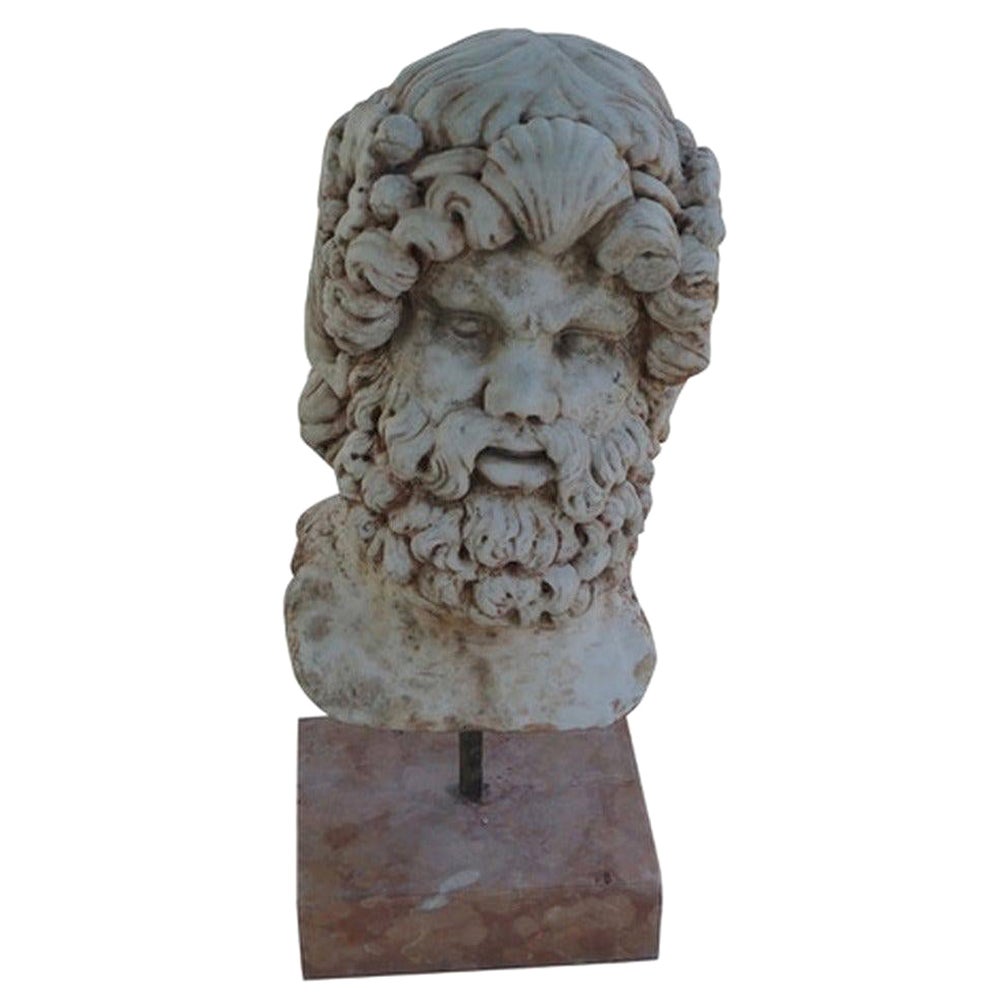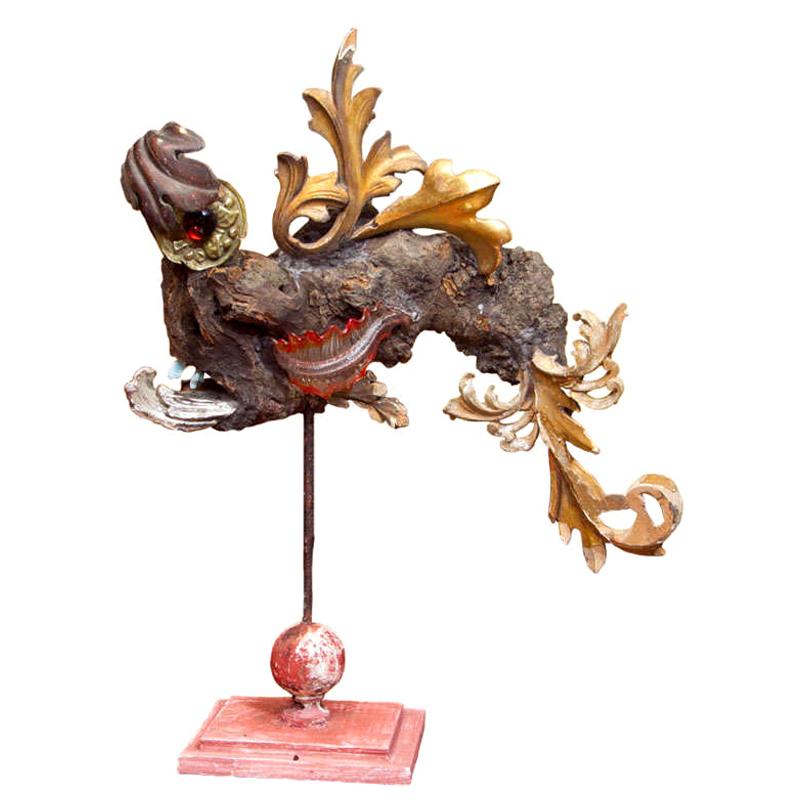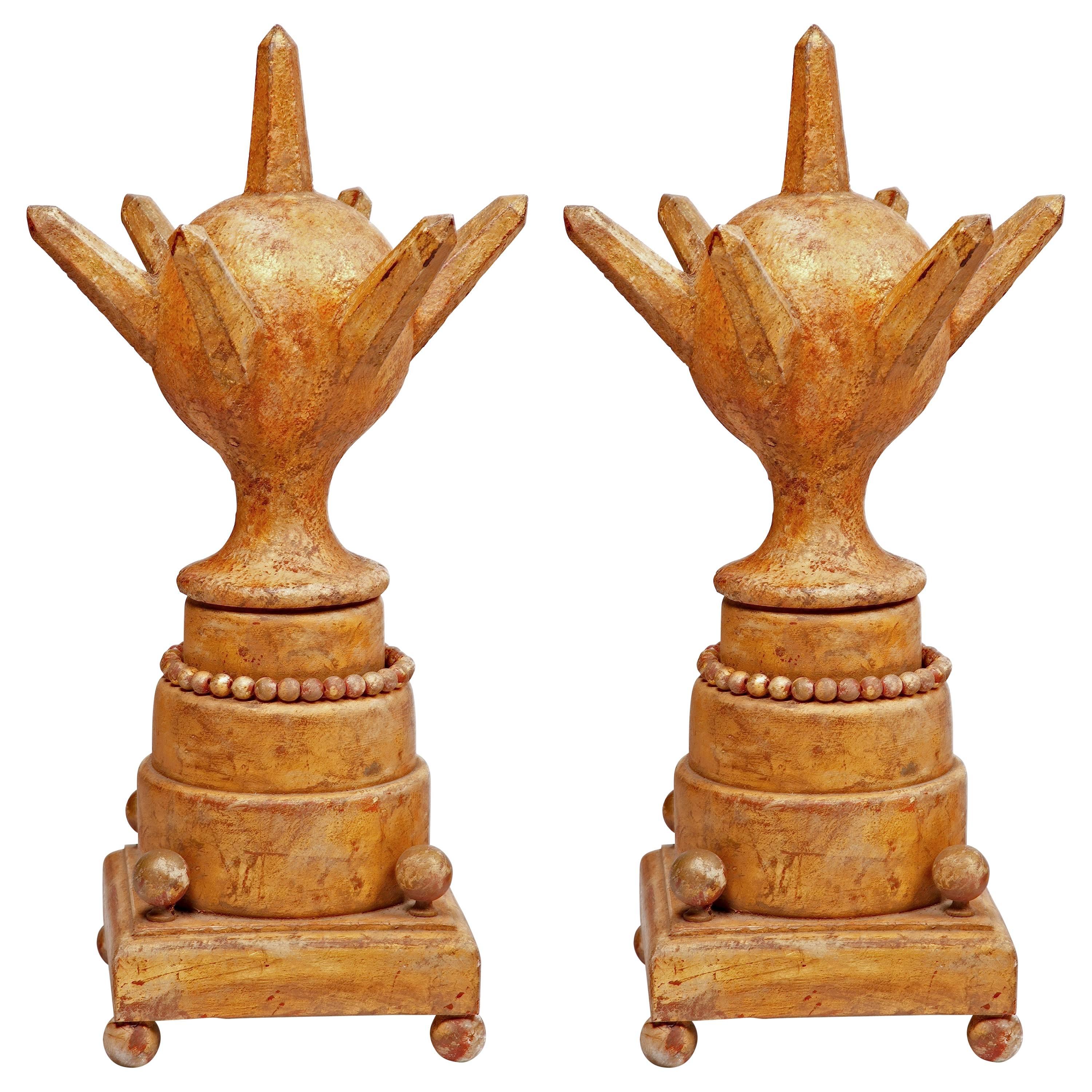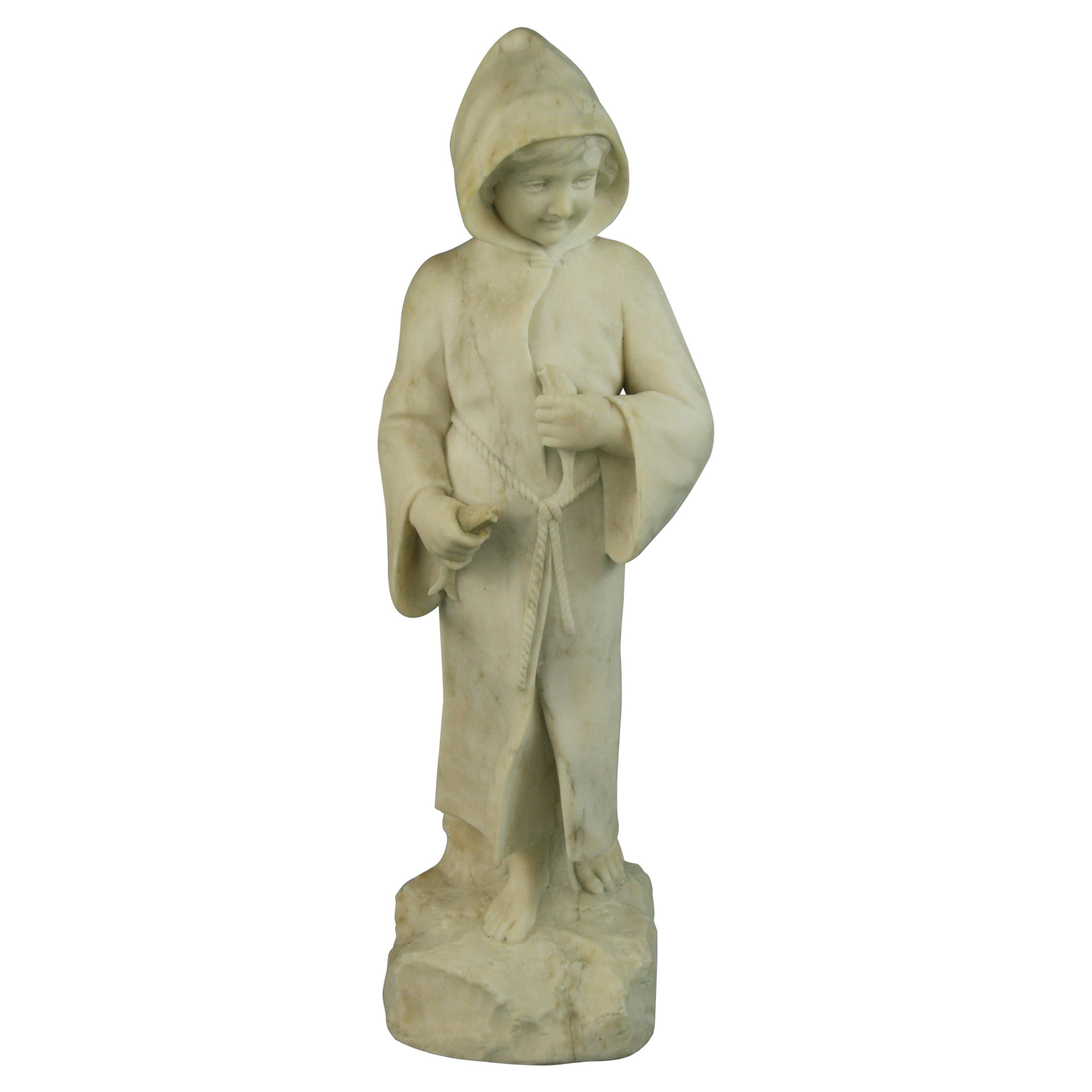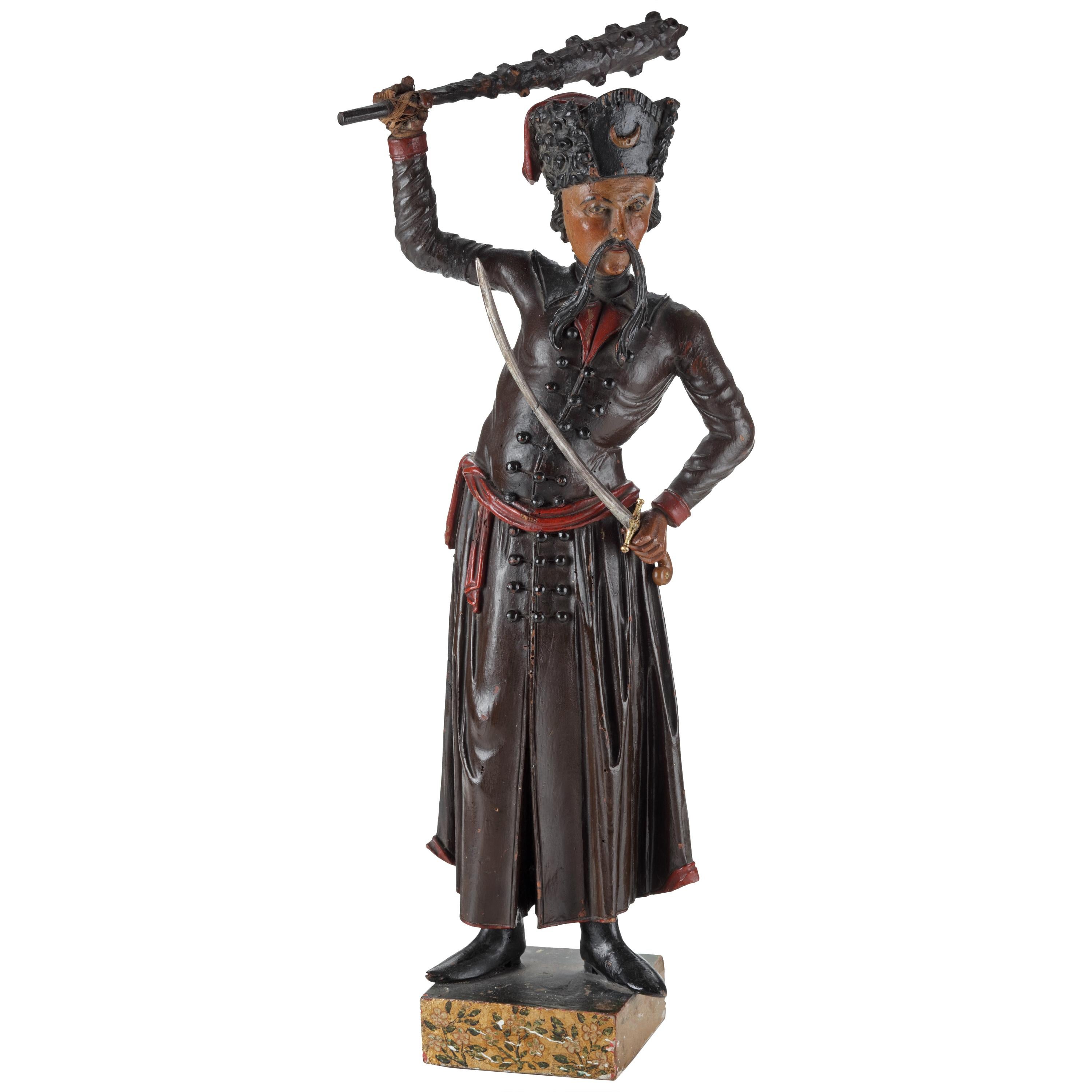Items Similar to Vanitas Sculpture, Italy Beginning of 19th Century
Video Loading
Want more images or videos?
Request additional images or videos from the seller
1 of 16
Vanitas Sculpture, Italy Beginning of 19th Century
About the Item
Above the gilded wooden base is a Vanitas, a painted plaster sculpture depicting a human skull. Italy early 19th century.
- Dimensions:Height: 8.75 in (22.23 cm)Width: 7.5 in (19.05 cm)Depth: 9.5 in (24.13 cm)
- Materials and Techniques:
- Place of Origin:
- Period:
- Date of Manufacture:1800
- Condition:Wear consistent with age and use.
- Seller Location:Milan, IT
- Reference Number:1stDibs: LU917133346552
About the Seller
5.0
Vetted Seller
These experienced sellers undergo a comprehensive evaluation by our team of in-house experts.
Established in 1991
1stDibs seller since 2011
212 sales on 1stDibs
Typical response time: 7 hours
- ShippingRetrieving quote...Ships From: Milan, Italy
- Return PolicyA return for this item may be initiated within 7 days of delivery.
More From This SellerView All
- Folk Art Wooden Sculpture, USA, Second Half 19th CenturyLocated in Milan, ITFruit wood sculpture, Folk Art, depicting a man standing with his hands in his pockets. United States, second half of the 19th century.Category
Antique Late 19th Century American Figurative Sculptures
MaterialsFruitwood
- Vanitas Sculpture, Italy End of 18th CenturyLocated in Milan, ITOver the carved wooden painted base depicting a rock, is set a Vanitas, plaster cast sculpture of a human skull, with femoral bones. Italy last part of 18th century.Category
Antique Late 18th Century Italian Figurative Sculptures
MaterialsPlaster, Wood
- Memento Mori in Wood with Chrismon, Monogram of Christ, Italy End of 17th CentLocated in Milan, ITA Memento Mori in wood with Chrismon, monogram of Christ. Valuable sculpture in fruit wood in almost true-to-life measurements, sculpted with art and finished with a wealth of details. The wood was covered with a thin layer of pellet and finished in color. Immediately above the forehead, in correspondence with the anterior neonatal fontanel, the CHRISMON is painted in purple red. The monogram of Christ or Chi Rho (or CHRISMON) is a combination of letters from the Greek alphabet, which form an abbreviation of the name of Christ. Solar in nature, often inscribed in a circle with multiple rays reminiscent of the cosmic wheel deriving from the ancient solar emblems of Egypt. The symbol consists of two large overlapping letters, the 'X' and the 'P'. They correspond, respectively, to the Greek letter '?' ('chi', which reads kh, aspirated) and '?' ('rho', which reads r). These two letters are the initials of the word '???st??' (Khristòs ), the name of Jesus, which in Greek means "anointed" and translates the Hebrew "messiah". On the sides of these two letters, there are very often two others: one 'a' and one '?', alpha and omega...Category
Antique Late 17th Century Italian Figurative Sculptures
MaterialsWood
- An articulated artist Dummy, Italy end of 19th century.Located in Milan, ITAn articulated mannequin of a medium-sized painter, with the face to life. The mannequin is sculpted and made of fruit wood. The height-adjustable stand (40” – 55”, diameter 8”), is ...Category
Antique Late 19th Century Italian Figurative Sculptures
MaterialsIron
- Two terracotta sculptures depicting the ox and the donkey. Italy, 19th century.Located in Milan, ITTwo terracotta sculptures depicting the neck and head, the ox and the donkey, of a nativity scene. The two sculptures are made of terracotta entirely by hand, finished in stick and c...Category
Antique 1870s Italian Animal Sculptures
MaterialsTerracotta
- Erotic Cast Pewter Plaque, France, 1880By Eduard StellaLocated in Milan, ITErotic cast pewter plaque: A good surprise. In the bedroom with a bourgeois interior, the master of the house surprises the maid asleep, feather duster in hand and petticoat up. By Etienne Alexandre...Category
Antique Late 19th Century French Figurative Sculptures
MaterialsPewter
You May Also Like
- Italian Fish Sculpture Made of 18th and 19th Century FragmentsLocated in Westport, CTUnique, whimsical and original sculpture made from antique gilded carvings and vintage Murano glass. This particular fish is shown with a heavy eyebrow and murano teeth! One of two r...Category
21st Century and Contemporary Italian Animal Sculptures
MaterialsDriftwood
- 19th Century Wooden Lady SculptureLocated in Copenhagen, KBeautiful carved wood sculpture of a lady.Category
Antique Mid-19th Century French Belle Époque Figurative Sculptures
MaterialsWood
- Pair of Gate Posts Sculptures circa 19th CenturyLocated in New York, NYYou don't see these everyday! Rare and exceptional architectural elements consisting of parcel gilt metal and wood with beading and ball feet attributed as late 19th Century or early...Category
Antique 1890s American Abstract Sculptures
MaterialsMetal
- Italian Marble Sculpture of a Robed Child Holding Two Fishes, Late 19th CenturyLocated in Douglas Manor, NY3-532 detailed marble sculpture of a robed boy holding 2 fishes.Category
Antique 1890s Figurative Sculptures
MaterialsMarble
- 19th Century Italian Socrates Mask, Carrara, Rosso Verona Marble SculptureLocated in West Palm Beach, FLAn antique Italian mask of Socrates, the Classical Greek philosopher 470-399 BC. Hand carved in white Carrara marble and mounted on a Rosso Verona marble base, in good condition. Wea...Category
Antique Late 19th Century Italian Late Victorian Busts
MaterialsMarble, Carrara Marble
- Orientalist Turkomania Wood Sculpture of an Ottoman, Early 19th CenturyLocated in Amsterdam, NLA carved and painted wood 'TURKOMANIA' sculpture of an ottoman soldier French or Dutch Turkomania, early 19th century Depicted in standing position, with a sword in one hand and a club in the raised other, with a fur hat, long moustache and long coat, on a square base. Measures: H. 58 cm Note: During the Dutch War of Independence from 1568 till 1648, the Dutch and Turks were allies against Roman Catholic Spain and the slogan of the Dutch was “liever Turks dan Paaps” (rather Muslim than Roman Catholic). In 1612 the first Dutch ambassador arrived in Istanbul. Nevertheless, in Holland, there was also the image of the cruel and heretic Turk stemming from the frequent violent clashes between Dutch ships and the pirates from Algiers, usually called the “Turkish pirates”. When the Ottoman armies advanced against Vienna, in the eyes of many Europeans the Islam bent on destroying Christianity. Later in the early 19th century, although the Turkish threat to Europe was long gone, the image of the Turks deteriorated again because of the Greek uprising. The Sultan Mahmud II understood that Turkey had to modernize along West European lines and among other things in 1808 he replaced the “picturesque” oriental clothing...Category
Antique Early 19th Century Dutch Figurative Sculptures
MaterialsWood
Recently Viewed
View AllMore Ways To Browse
Gilded Plaster
Wood Skull
1800 Sculpture Wood
Wooden Skull
Vanitas Skull
Plaster Skulls
Antique Bow And Arrow
Antique Carved Figure Statue
Antique Marble Pictures
Carved Wood Cherubs
Greek Roman God
Art Deco Wood Figure
Figural Earthenware
French Art Deco Statue
Gold Drapery
Love Figurine
19th Century Male Bronzes
Art Deco Vintage Fan
